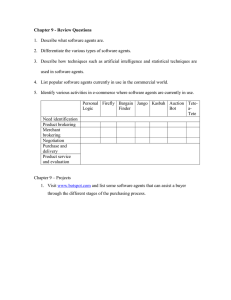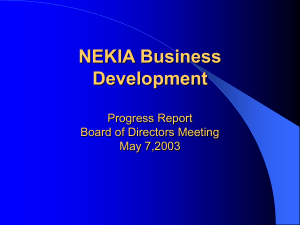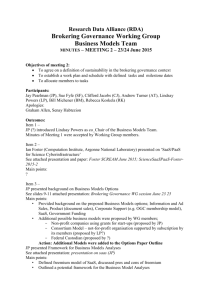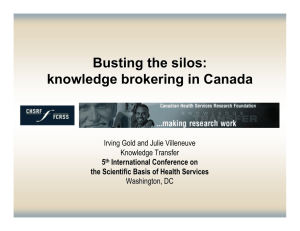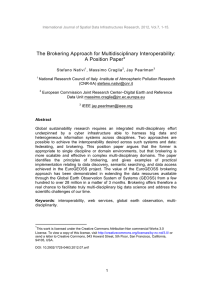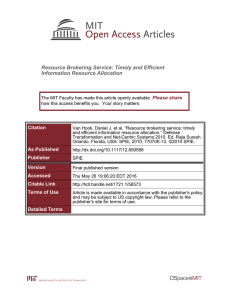KTC Module 1 – Lesson 4 – presentation
advertisement
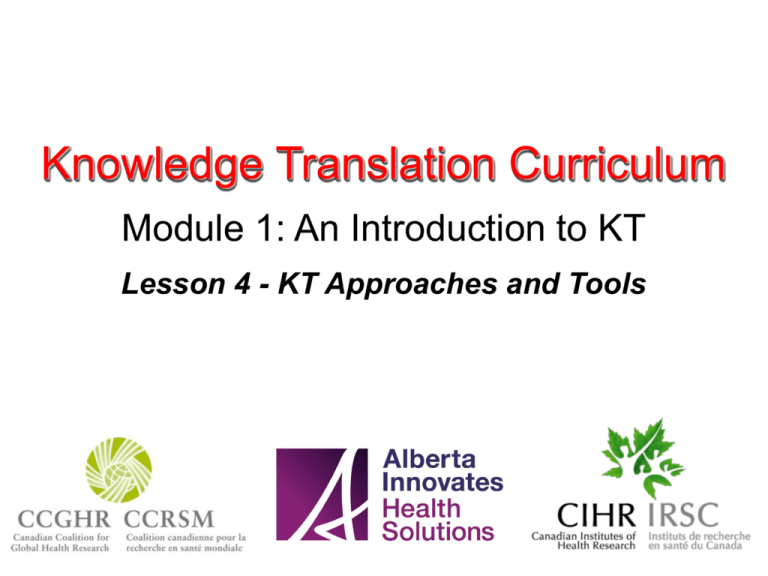
Knowledge Translation Curriculum Module 1: An Introduction to KT Lesson 4 - KT Approaches and Tools Brokering and Synthesis deliberative dialogues take-home messages multi-stakeholder drama meetings staff secondment rapid response meta-analysis situation analyses Brokering policy briefSynthesis Knowledge peer-reviewed Translation capacity paper Platforms strengthening radio spot courses press release priority setting grey literature systematic review Knowledge Brokering • people-centred efforts to bring stakeholders together, to build relationships, to cement coalitions and alliances, to understand abilities and needs, to share ideas and evidence, and to develop new skills and capacities. • typically led by a knowledge broker. Knowledge Brokering can lead to: •deliberative, multi-stakeholder meetings to discuss the research agenda and policy concerns •off-the-record meetings or fora •deliberative meetings to discuss a synthesis tool (e.g. policy brief) •development of a Knowledge Translation Platform Knowledge Synthesis • the formal combination of different pieces of research evidence (e.g. in a systematic review) to provide a comprehensive overview of the evidence in response to a particular question • the creation of communications documents or acts (e.g. drama, press release) that situate a piece or pieces of research evdience against the broader context. The Knowledge Translation Platform (KTP) • institutionalizes the acts of brokering and synthesis. Has many different organizational forms (NGO, based in Ministry, based in university). • may: broker, facilitate meetings; provide leadership to the research/KT community; inventory researchers, research evidence; synthesize and package evidence; strengthen capacities of researchers and research users; lead advocacy efforts. The Rapid Response Service tailored Response completed submited to national, global evidence assembled reviewers for comment against context, other knowledge response finalized evidence accessed, appraised, contextualized entered into global database of Responses response disseminated request, problem to encourage learning clarified among RRSes Rapid Response Service Policy-maker uses response as policy/strategy input The Policy Brief/Dialogue Model Monitoring and evaluation strategy developed Implementation barriers addressed Policy dialogue held optional 2nd Policy dialogue Evidence reviewed; options created Stakeholder feedback Problem clarified Policy Development Prioritising policy brief topics Policy Implementation Policy Evaluation other demand possible starting points End-of-Grant KT • the dissemination of research results on completion of a research project • discuss and describe the project, implications of findings • often seen as the conclusion of a project • on their own, VERY ineffective at influencing behaviour or policy: a one-way, researcher-controlled flow of information. • how can we modify existing e-o-g approaches to make them more dynamic and influential? Peer-reviewed paper • invite co-authorship: evidence has a much greater chance of influencing policy if policy-makers are involved in its creation. • improve the structure of the paper. Only a read paper has a chance at influence. • use it as a source for other outputs • ensure it is databased and part of social networking presence Press releases • understand the formulas local news outlets require of press releases • reduce research findings to catchy and informative bullets with a punchy headline Take-home messages •a list of 3-4 major points/implications of findings. •Part of 1:3:25 graded entry approach: •1 = take-home messages •3 = executive summary •25 = full research paper or synthesis.
